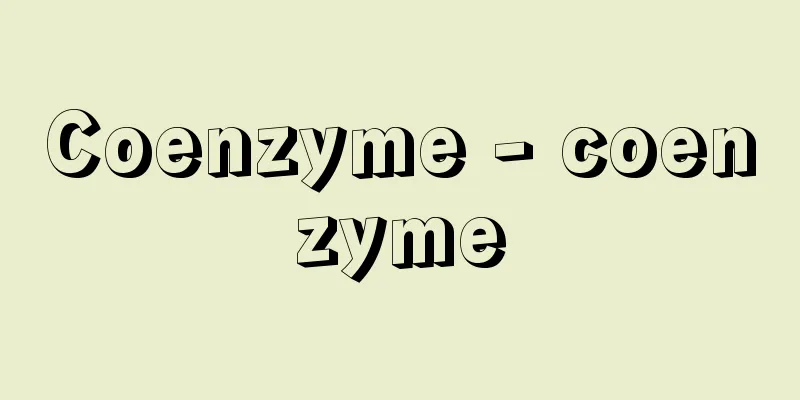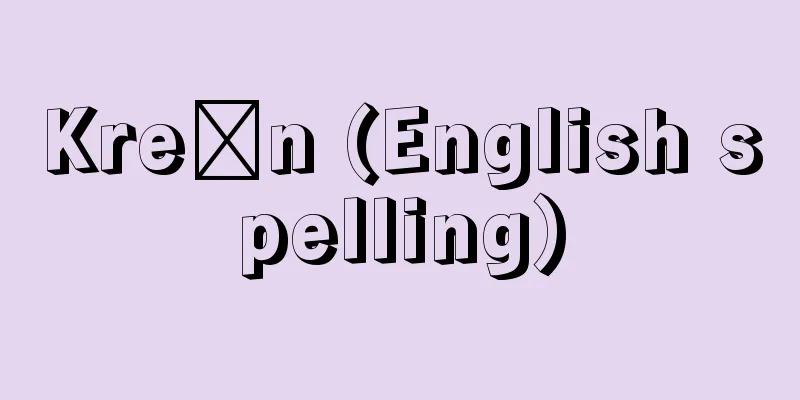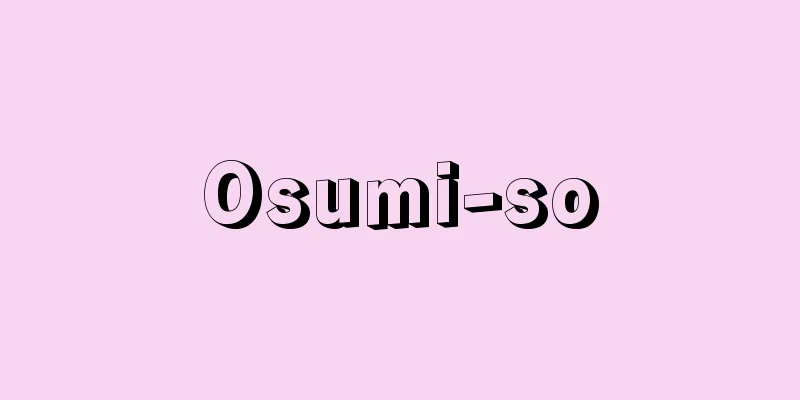Coenzyme - coenzyme

|
A prosthetic group that reversibly binds to the protein portion of an enzyme (called an apoenzyme) and contributes to the expression of enzymatic action. It is also called an auxiliary enzyme, coenzyme, or coenzyme. Normally, apoenzymes or coenzymes alone are inactive, but when the two bind together, they form a complex (called a holoenzyme) that exhibits enzymatic action. Coenzymes, which bind weakly and dissociate easily, can be considered a common substrate (cosubstrate) for many similar reactions. Most water-soluble vitamins are components of coenzymes, such as thiamine (vitamin B1 ) to thiamine pyrophosphate (TPP), riboflavin (vitamin B2 ) to flavin adenine dinucleotide (FAD) and flavin mononucleotide (FMN), nicotinic acid (niacin) to nicotinamide adenine dinucleotide (oxidized NAD and NAD + ), pyridoxine, pyridoxal, and pyridoxamine (vitamin B6 ) to pyridoxal phosphate (PLP), pantothenic acid to coenzyme A, biotin to covalently bind to carboxylase, folic acid to tetrahydrofolate ( FH4 or THF), and cobalamin (vitamin B12 ) to cobamide coenzymes. Some prosthetic groups are distinct from coenzymes. For example, the prosthetic group of catalase is ferriprotoporphyrin, which is not a coenzyme. Also, some enzymes require metal ions for activation; these metal ions bind to the enzyme or substrate to enhance the catalytic action of the enzyme. These metal ions are activators, but not coenzymes. Coenzymes are generally specific, stable, small, non-proteinaceous organic compounds. Reactions that require coenzymes include oxidation-reduction, group transfer, isomerization, and covalent bond formation. Decomposition reactions do not require coenzymes. Coenzymes for reactions that transfer hydrogen include NAD (nicotinamide adenine dinucleotide), NADP (nicotinamide adenine dinucleotide phosphate), FMN (flavin mononucleotide), FAD (flavin adenine dinucleotide), lipoic acid, and coenzyme Q (ubiquinone). Coenzymes for reactions that transfer groups other than hydrogen include phosphosaccharides, coenzyme A, thiamine pyrophosphate, pyridoxal phosphate, folate coenzymes, biotin, cobamide coenzymes, and lipoic acid. The first characteristic of enzyme reactions that require a coenzyme is that the coenzyme undergoes the opposite change to that which occurs in the substrate. For example, in an oxidation-reduction reaction, when the substrate is oxidized, the coenzyme is reduced. In the reaction from alanine to pyruvic acid, which is one of the amino group transfer reactions, the amino group is transferred to pyridoxal to form pyridoxamine. In the reaction from α-ketoglutarate to glutamic acid, the amino group of pyridoxamine is transferred to form pyridoxal. Physiologically, there are some reactions where the substrate reaction is not important, but rather the change in the coenzyme. For example, in the reaction in which pyruvate is converted to lactic acid anaerobically during muscle exercise, the important thing is not the substrate, but the reaction in which NADH (reduced NAD) is converted to NAD. When NAD is no longer produced, glycolysis ceases and the production of ATP (adenosine triphosphate) stops. In other words, under anaerobic conditions, NADH is reoxidized in the reaction in which pyruvate is reduced to lactic acid, and ATP is synthesized. Furthermore, a structural feature of coenzymes is that many of them contain D-ribose adenosine phosphate. [Teruyoshi Arima, Taro Arima, and Tamiyo Takeuchi] "Protein Hybrids Vol. 3: The Frontline of Chemical Modifications," edited by Inada Yuji and Wada Hiroshi (1990, Kyoritsu Shuppan)" ▽ "General Overview of Biochemistry," by Shimabara Kenzo (1991, Sankyo Shuppan)" ▽ "New Introduction to Enzyme Chemistry," revised 2nd edition, edited by Nishizawa Kazutoshi and Shimura Kensuke (1995, Nanzando)" ▽ "Life Chemistry 1: Natural Enzymes and Artificial Enzymes," edited by Komiyama Makoto and Yashiro Morio, Inoue Haruo, Kitamori Takehiko, Takagi Katsuhiko and Hirano Shinichi (1996, Maruzen)" ▽ "Organic Chemistry in Life Sciences: Stereochemistry, Biomolecules and Metabolism," by Iida Takashi and edited by Nanbara Toshio (2000, Kyoritsu Shuppan)" ▽ "New Introduction to Biochemistry," 5th edition, by Nakajima Kunio, Kashiwamata Shigeo and Hisamawari Hiroshige (2002, Nanzando)" ▽ "Structure and Function of the Human Body 2: Biochemistry" by Kazutomo Miwa and Keiichi Naka, 11th Edition (2005, Igaku Shoin) [References] | | | | | | | | | | | | | | | | | | | | | |Folic | |Source: Shogakukan Encyclopedia Nipponica About Encyclopedia Nipponica Information | Legend |
|
酵素のタンパク質部分(アポ酵素という)と可逆的に結合して酵素作用の発現に寄与する補欠分子族(補欠分子団)をいう。助酵素、コエンチーム、コエンザイムともよばれる。普通はアポ酵素のみ、あるいは補酵素のみでは活性をもたないが、両者が結合すると複合体(ホロ酵素という)を形成して酵素作用を示すようになる。結合が弱く解離しやすい補酵素は、多くの類似の反応に共通な基質(補基質)とみなすことができる。 水溶性ビタミンの大部分は補酵素の成分である。水溶性ビタミンから誘導される補酵素としては、チアミン(ビタミンB1)→チアミンピロリン酸(TPP)、リボフラビン(ビタミンB2)→フラビンアデニンジヌクレオチド(FAD)とフラビンモノヌクレオチド(FMN)、ニコチン酸(ナイアシン)→ニコチンアミドアデニンジヌクレオチド(酸化型NAD・NAD+)、ピリドキシン・ピリドキサール・ピリドキサミン(ビタミンB6)→ピリドキサールリン酸(PLP)、パントテン酸→補酵素A、ビオチン→カルボキシラーゼに共有結合、葉酸→テトラヒドロ葉酸(FH4またはTHF)、コバラミン(ビタミンB12類)→コバミド補酵素がある。 補欠分子族のなかには補酵素とは区別されるものがある。たとえば、カタラーゼの補欠分子団はフェリプロトポルフィリンであるが、補酵素ではない。また、活性化のためには金属イオンを必要とする酵素もあり、これらの金属イオンは酵素または基質と結合して酵素の触媒作用を強める。このような金属イオンは活性化因子activatorではあるが、補酵素ではない。 補酵素は一般的には特異性があり、安定した小分子の非タンパク質性の有機化合物である。補酵素を必要とする反応には、酸化還元、基転移、異性体化、共有結合形成がある。分解反応では補酵素を必要としない。水素を転移する反応の補酵素には、NAD(ニコチンアミドアデニンジヌクレオチド)、NADP(ニコチンアミドアデニンジヌクレオチドリン酸)、FMN(フラビンモノヌクレオチド)、FAD(フラビンアデニンジヌクレオチド)、リポ酸、補酵素Q(ユビキノン)があり、水素以外の基を転移する反応の補酵素としては、リン糖質、補酵素A、チアミンピロリン酸、ピリドキサールリン酸、葉酸補酵素、ビオチン、コバミド補酵素、リポ酸がある。 補酵素を必要とする酵素反応の特徴としては、第一に基質におこる変化の裏返しの変化が補酵素におこることである。たとえば、酸化還元反応では基質が酸化されると補酵素が還元される。アミノ基転移反応の一つであるアラニンからピルビン酸への反応では、アミノ基はピリドキサールに転移されてピリドキサミンとなる。また、α(アルファ)-ケトグルタル酸からグルタミン酸への反応では、ピリドキサミンのアミノ基が転移されてピリドキサールとなる。 生理学的には、基質の反応が重要ではなく、補酵素の変化が重要なものがある。たとえば、筋肉の運動によって嫌気的にピルビン酸が乳酸となる反応で重要なのは、これらの基質ではなくて、NADH(還元型NAD)がNADとなる反応である。NADが生成されなくなると、解糖が行われなくなってATP(アデノシン三リン酸)の生成が止まる。すなわち、嫌気的条件では、ピルビン酸が還元されて乳酸となる反応でNADHが再酸化され、ATPの合成が行われる。 なお、補酵素の構造上の特徴としては、D-リボースアデノシンリン酸をもつものが多いことがある。 [有馬暉勝・有馬太郎・竹内多美代] 『稲田祐二・和田博編『タンパク質ハイブリッド第3巻 化学修飾最前線』(1990・共立出版)』▽『島原健三著『概説 生物化学』(1991・三共出版)』▽『西沢一俊・志村憲助編『新・入門酵素化学』改訂第2版(1995・南江堂)』▽『小宮山真・八代盛夫著、井上晴夫・北森武彦・高木克彦・平野真一編『生命化学1 天然酵素と人工酵素』(1996・丸善)』▽『飯田隆著、南原利夫監修『ライフサイエンス有機化学――立体化学・生体分子・物質代謝』(2000・共立出版)』▽『中島邦夫・柏俣重夫・樋廻博重著『新生化学入門』第5版(2002・南山堂)』▽『三輪一智・中恵一著『人体の構造と機能2 生化学』第11版(2005・医学書院)』 [参照項目] | | | | | | | | | | | | | | | | | | | | | | | |出典 小学館 日本大百科全書(ニッポニカ)日本大百科全書(ニッポニカ)について 情報 | 凡例 |
Recommend
Light emitting diode - Hakkodaiodo (English spelling) light emitting diode
A diode that emits light when a current is passed...
Bolotnikov, I.
…the first Russian peasant war (summer 1606–Octob...
Vertical photography
...Also, the area covered by one frame is large, ...
Cyanobacteria (blue-green algae)
A division of lower organisms. Single-celled organ...
About the medical arts
…Years of birth and death unknown, active during ...
Index Society
…The British magazines Punch and Illustrated Lond...
Odenwald (English spelling)
A hilly mountain range in central Germany, east of...
Azuma clan - Touji
A medieval and early modern samurai family from Sh...
Chicago Tribune
An American daily newspaper. It was first publishe...
《Medical Model Guidelines》 - Ihanteiko
...Later, Sadanobu ordered him to study copperpla...
Saturated solution
When a solution exists in equilibrium with free s...
The three mountains of Kyoguchi - Kyoko no Sanzan
…Zhenjiang on the opposite bank is a key waterway...
Katsubushi
…It is also called “Katsubushi.” It is a smoked a...
Orthoptera - Orthoptera
A general term for the order Orthoptera of the cl...
sonare
...A small-scale sonata that is relatively easy t...





![Kazamaura [village] - Kazamaura](/upload/images/67cb3194b6cd6.webp)



